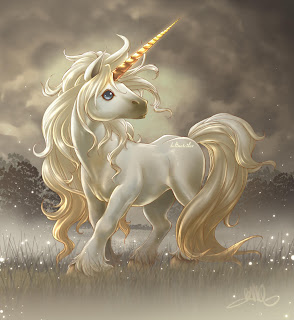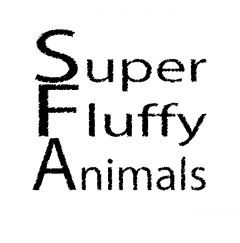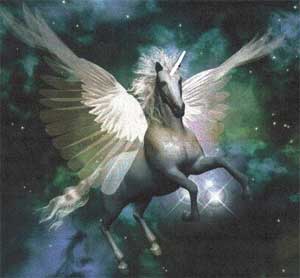
Whatisyourspiritualanimal.com suggests that today is National Unicorn Day. “How can that be?”, I hear you cry, “They aren’t real!”
True.
However, the idea of a one-horned horse type creature has been around since the Ancient Greeks, writing about them as part of nature, not of myth. The physical appearance of a unicorn is most likely a combination of a Rhinocerous (water horse with one tusk), a Goat (beard and horns on it’s head) and a Narwhal (medium sized whale with a very long straight tusk or horn). Most writers had heard the tales of Unicorns and perhaps saw a Rhino for the first time believing it to be the legendary Unicorn. The magical powers of the Unicorn itself, and more importantly it’s tusk, I believe stems from people’s lack of knowledge of the unknown to which they project ideas of fantasy and magic until they are understood better. Unfortunately, in some countries, the idea of healing powers from tusks and horns of many animals, including Elephants and Rhinos, is still prominent today leading them to hunt the animals to gain their healing properties.
When people think of Unicorns, they conjure up different images; so here is a list of the Top Ten Unicorns to help you identify which one you picture:
 1) Archaic Unicorn – Goat sized, Goat beard, Lion tail, Cloven Hooves
1) Archaic Unicorn – Goat sized, Goat beard, Lion tail, Cloven Hooves

2) Northern European – Large horse size, Pure white
 3) Western European – Wings on the feet, Curly horn
3) Western European – Wings on the feet, Curly horn
 4) Central European – Smaller pony size
4) Central European – Smaller pony size
 5) Alps and Carpathian – Grey speckled and robust, Largely Goat-like
5) Alps and Carpathian – Grey speckled and robust, Largely Goat-like
 6) Eastern European – Pony size, very fleeting when seen
6) Eastern European – Pony size, very fleeting when seen
 7) Chinese/Japanese – Almost Cow-like, Fancy horn
7) Chinese/Japanese – Almost Cow-like, Fancy horn
 8) Gaelic – Heavy coat for Winter conditions
8) Gaelic – Heavy coat for Winter conditions
 9) Black – Black fur, Red horn and hooves
9) Black – Black fur, Red horn and hooves
 10) Alicorn – Winged horse, Pegasus
10) Alicorn – Winged horse, Pegasus
To find out more about Unicorns, I got my information and pictures from these sites: Unicorn Glitter Palace, Magic Of Unicorns, Land Of Unicorns, and Wikipedia
For more Lovely Lists, take a look here

